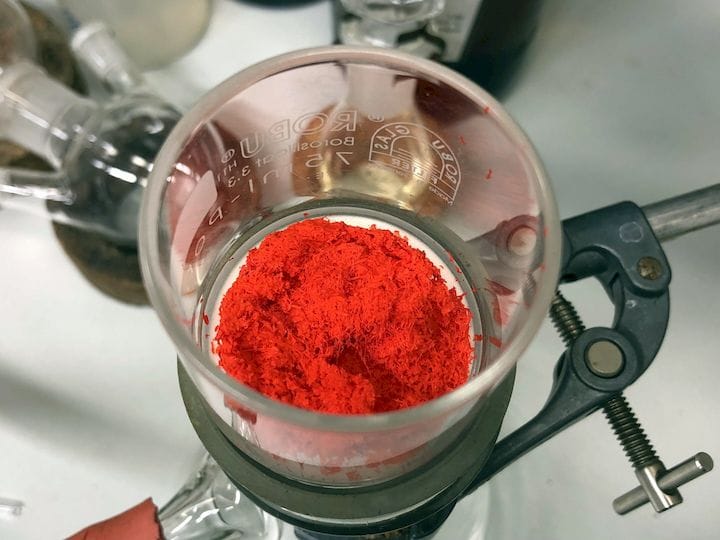![A new polymer, S-PPV [Source: TU Wein]](https://fabbaloo.com/wp-content/uploads/2020/05/image-asset_img_5eb09e870c47d.jpg)
A new polymer development might eventually lead to the ability to 3D print many new functional devices.
Researchers at TU Wien developed a way to create the new polymer by using only commonly available materials and a relatively inexpensive production process that could easily be scaled up.
The new material is a type of organic polymer, called “S-PPV”. While there are plenty of existing organic polymers used today in industry, most notably in components such as OLED screens, these are all O-PPVs. O-PPVs are so named because they use an oxygen molecule to bind side groups, which determine the electrical properties of the material.
The new material, S-PPV, uses sulfur molecules instead of oxygen as the binding agent. Evidently the sulfur makes the resulting material far more useful, as it enables more easily transmitted electricity and is more stable in the long term.
However, it’s a wicked chemical problem to create S-PPVs. Nevertheless, the TU Wien researchers were able, finally, to develop a process to produce the S-PPVs.
My thinking is whether the new S-PPV material might be suitable for 3D printing use. It may be unlikely to be 3D printed directly on its own, as there are many constraints such as flow rate, softening temperatures, etc.
However, it may be possible to create composite 3D printing materials using S-PPVs. Perhaps it could be combined with a common binder such as PLA or mixed into a liquid resin, both of which could be 3D printed with current equipment.
The implication could be that we just might be able to 3D print certain types of electronic components in the future by laying down thin layers of the material. Components such as displays, solar cells, LED lights and more might be possible.
However, it’s not clear whether S-PPV’s amazing properties would be negated by mixing it into a composite. I’m sure some experiments will take place.
My belief is that we are by no means at the end of the line for 3D printing materials. What started with merely ABS is now an expanding universe of 3D printable materials of all types. We are certain to see many more very unusual materials added to 3D print supply cabinets in the near future.
Via Phys.org











A research thesis details the incredibly complex world of volumetric 3D printing. We review the highlights.